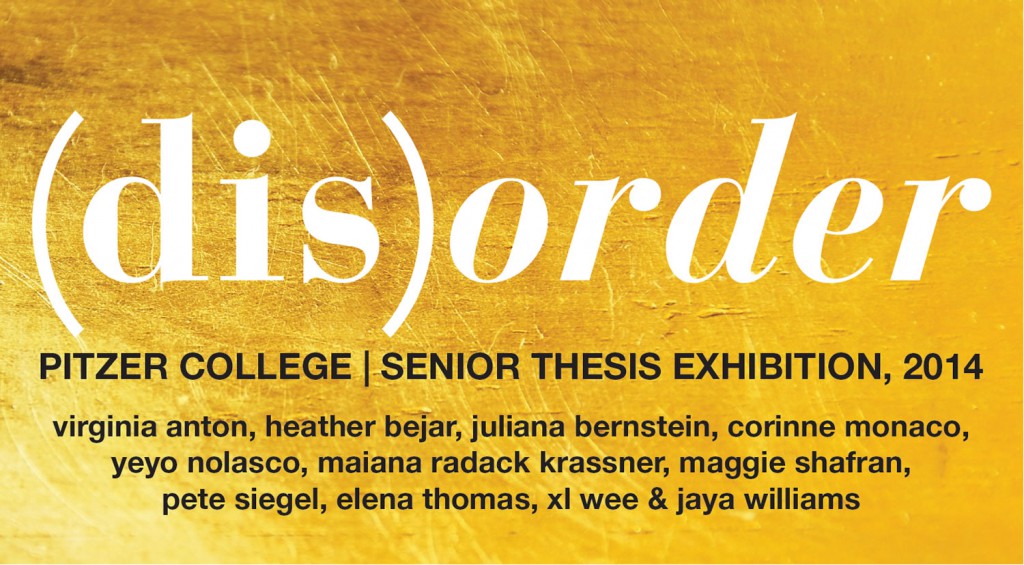
(dis)order: Senior Art Exhibition 2014
Virginia Anton, Heather Bejar, Juliana Bernstein, Corinne Monaco, Yeyo Nolasco, Maiana Radack Krassner, Maggie Shaffran, Pete Siegel, Elena Thomas, XL Wee, Jaya Williams
May 1-17, 2014
Pitzer College Art Galleries:
Nichols Gallery, Broad Center
Barbara Hinshaw Memorial Gallery, Grove House
Salathé Gallery, McConnell Center
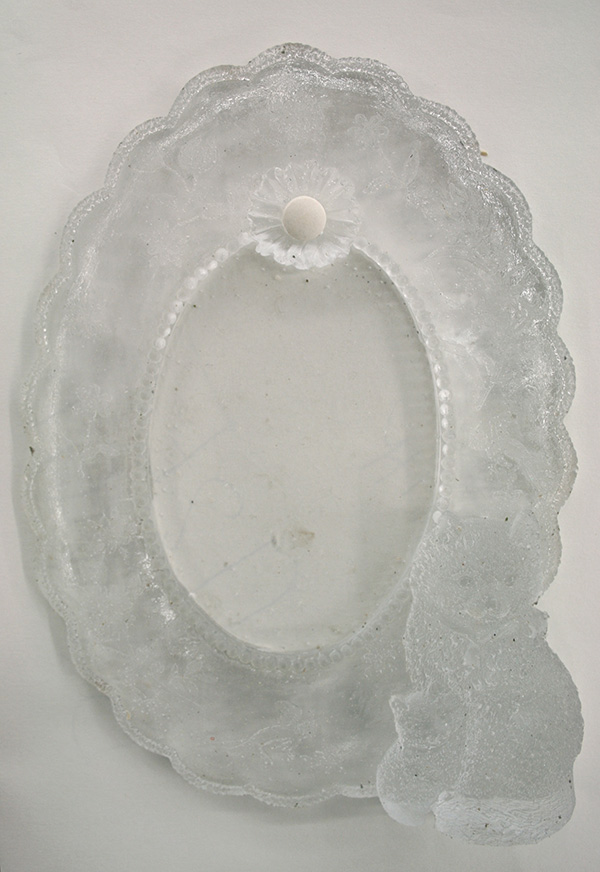
Virginia Anton
I am on a search to understand and accept myself and my personal hardships through my artwork. As a young woman living with cystic fibrosis and cystic fibrosis-related diabetes, my work examines concepts of erosion, health and life/death.
I begin all of my work with a concept or a challenge and choose what material will work best to communicate that particular idea. I take pleasure in bouncing around from medium to medium and experimenting with new materials. I am influenced by artists such as Felix Gonzalez-Torres, Bob Flanagan and Wolfgang Tillmans, artists who do work that explores their own personal narratives.
I have to take a minimum of thirteen medications and medical treatments daily in order stay relatively healthy. This is a huge part of my life and has been difÿcult for me to come to terms with, but I have found a way to speak about it through my artwork. In this project, Living Plastic, I have chosen to work with plastic to represent the medical paraphernalia that permeates my life. Through a small degree of dark humor I want people to see that beauty and positiveness can be found in the worst of situations. [clear]
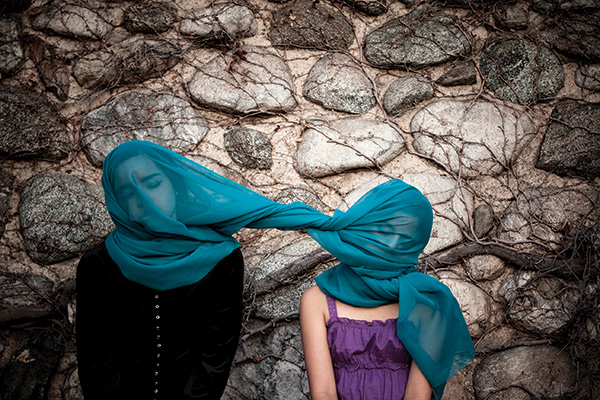
Heather Bejar
How are children implicated into adult patterns of thinking?
How do social pressures eclipse natural growth and development? Is the transformation of our culture exacting a price on our youth?
Are they shadows or memories that ignite the sensation of our fears and unveiled truths? [clear]

Juliana Bernstein
This project is based around the idea of episodic memory, a psychological term demonstrating an individual’s recollection of autobiographical events. Many people may remember a time or place by recalling a smell, a friend’s laughter, or a certain emotion, but for me, these moments have become stills. In my own mind, this recollection of personal memories manifests itself through images, frozen in my mind as singular representations of place. The images collected here call to a detached intimacy of a specific place or moment in my own memory. In the simplest terms, when I close my eyes and remember a place, this is the image I see. I chose to combine photography and painting in order to recreate some of my recollected memories, painting those images of places whose exact details I could not fully remember. My hope with this project is that my own personal images and moments may stimulate the viewers’ recollection of their own memories, and the mental images that go along with them. [clear]
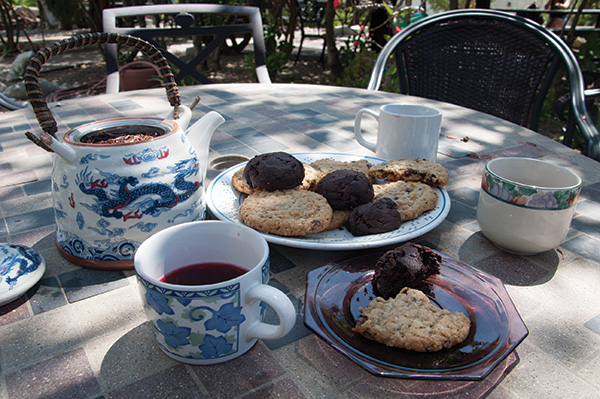
Yeyo Nolasco
Growing up a first-generation only-child in the melting pot of New York City, I have always felt a sense of disconnect. This feeling of isolation led to an unconscious otherizing of myself that in many ways hindered my ability to formulate and maintain close relationships. As such, I have always been fascinated by the nature of human interaction, and the parameters by which it operates. As a species constantly interacting with our environments, we are creating a multitude of connections with and among each other. My objective is to capture and reflect upon the thought, the feeling and the action incumbent in the moment; the moment of interaction, the moment of relation, the moment of connection.
Influenced by the principles of relational aesthetics, Fluxus and social practice, I seek to present the tangible remains of ephemeral spaces of interaction. Since spaces of intimate connection are transitory by nature and completely based on relational experience, this is an ongoing venture exploring human interaction through a variety of organized “happenings.” The objects displayed will serve as small reminders of our fleeting existence in an ever-shifting reality; chronicles of past nostalgia that harbor a longing for past and future moments of connection. By doing so, I hope to spawn conversations among the viewers in which they question their own relationships with the people and objects around them, as they move in and between different environments. [clear]
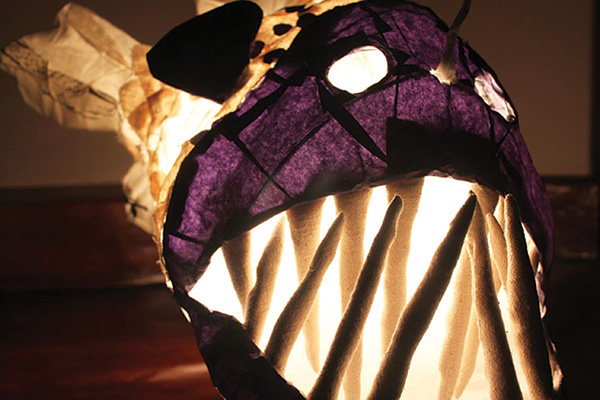
Corinne Monaco
The Deep Sea Project is an installation in which participants explore a polluted underwater realm. Terrestrial detritus, the stuff of junkyards and landfills, is strewn throughout the space as a commentary on humankind’s uncanny ability to make a mess of all earth’s biospheres. The only light emanates from somewhere within the sea creatures that live there; an internal spotlight highlighting the relationship each has to its transformed environment. For better or worse, this realm is comprised of the organic and inorganic, and as viewers navigate these dichotomous elements, the line dividing them becomes blurred.
The Deep Sea Project encourages the viewer to wonder about transformed and manipulated natural environments. What might the introduction of terrestrial objects into an aquatic ecosystem mean for the flora and fauna that live there? How might these creatures be forced to adapt to or deal with their altered world? In what ways might humanity’s junk have become incorporated into such terrains? The Deep Sea Project considers these questions through the use of materials that would otherwise wind up in landÿlls and junkyards; objects manipulated to simulate the natural world. [clear]
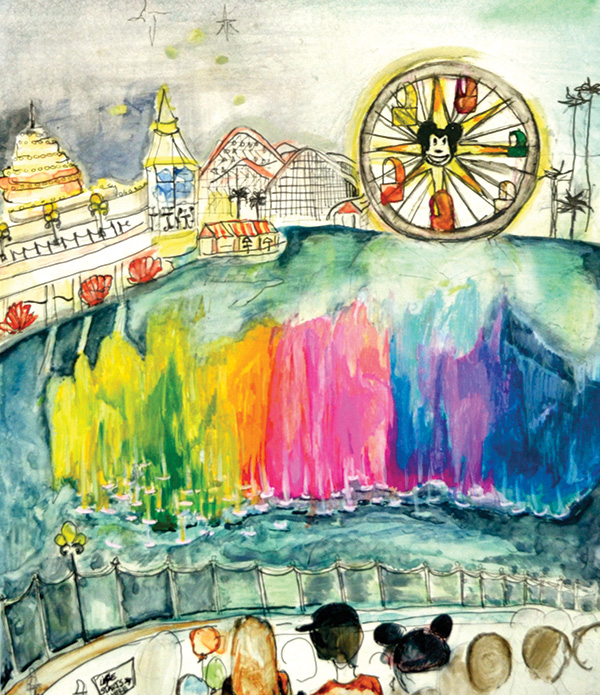
Maiana Radack Krassner
This project dismantles the personal narrative to reveal only the most essential elements of a story. The process of deconstructing this narrative, being my own, began with extracting and curating memories and diary entries. From these extracted pieces of my life over the past year, I created twenty mixed-media illustrations on clay canvas board, which are irregular in style and content, to accentuate the disarray of plot, character and setting into distinct images. Phrases I have plucked from my writing have been manipulated and presented along side the illustrations to further allude to the disrupted state of the narrative. This process allows for the circumvention of traditional linear narrative in favor of a more dynamic and interactive set of impressions. These impressions or moments, be they metaphoric or literal, coalesce in a kind of multiplicity that is both my own autobiography and simultaneously the narrative construct of the viewer. Settings, emotions, character development, etc. are defined through an autobiographical process, but the deconstruction and radical openness of the form they take as illustrations opens them up to a multitude of readings, which begin to illustrate the story of their reader, rather than their author. [clear]
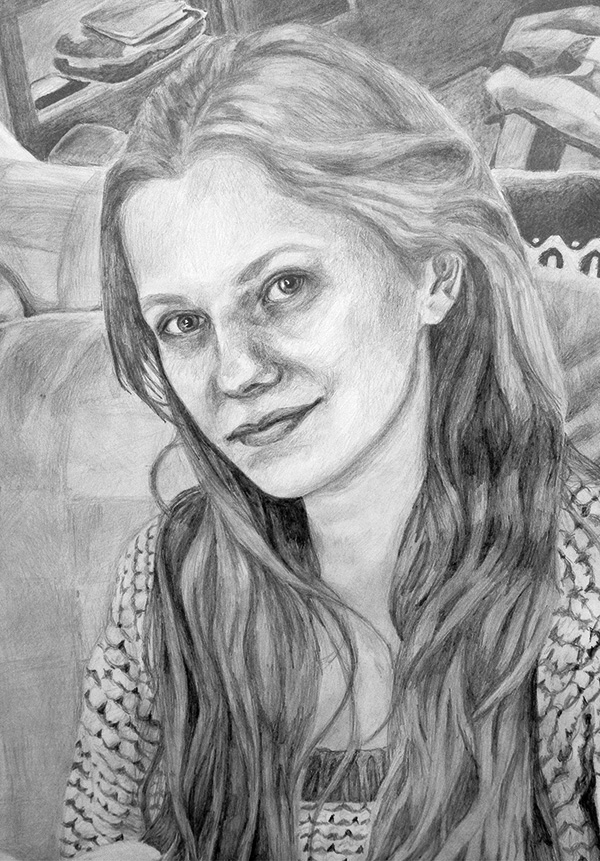
Maggie Shafran
Having an itinerant childhood meant I learned early on that loss and impermanence are unavoidable parts of life. My work is inspired by my experience with saying goodbye to friends I wasn’t ready to leave. Drawing these friends started as my way of staying close with them after moving and has evolved into a way of preempting the eventual separation by monumentalizing ordinary moments of friendship. These drawings embody our relationship as well as the setting that is the backdrop to our friendship.
I use a camera to capture a moment that feels authentic and I turn it into a drawing so the final piece becomes a unique, unrepeatable image. The drawing process becomes an intimate labor that mimics the struggles and satisfactions of close friendship.
Having each aspect of the image painstakingly rendered highlights the importance of the objects we live with and how they inform the setting for our friendship. This allows the body of work to also explore the theme of college culture and how our generation lives and presents itself. In breaking with current culture the work also operates as an anti-selÿe; the subjects are vulnerable, but also trusting as they give over control of the way they are represented. In this way the work evokes a familiar bond of friendship. [clear]
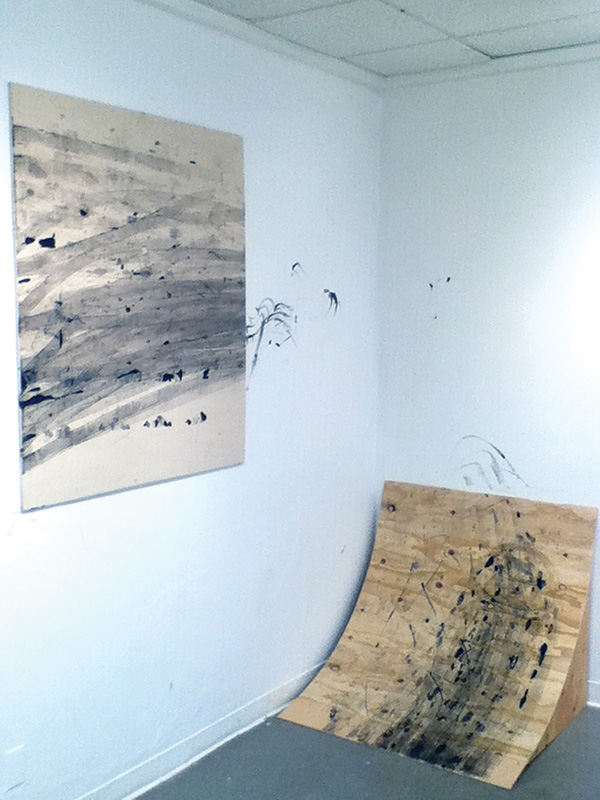
Pete Siegel
Through varied levels of abstraction, this series of sculptures blurs the boundaries between sculptural forms and (sub)urban/industrial forms—the former being conceived with artistic intent, the latter born of necessity and utility. These sculptures encourage one to reassess one’s environment using a combination of kinesthetic and spatial awareness, in the same way that a skateboarder evaluates the topography of the metropolitan landscape.Through varied levels of abstraction, this series of sculptures blurs the boundaries between sculptural forms and (sub)urban/industrial forms—the former being conceived with artistic intent, the latter born of necessity and utility. These sculptures encourage one to reassess one’s environment using a combination of kinesthetic and spatial awareness, in the same way that a skateboarder evaluates the topography of the metropolitan landscape.
My fascination with urban, suburban and industrial terrains stems directly from my background as a street skateboarder; street skateboarding being the act of using the obstacles of a cityscape, forms that are not originally intended for skateboarding, as the primary means of interaction. By applying the visual rhetoric of street skateboarding to sculptural forms within the gallery, I invite the viewer to reevaluate their attitude towards the everyday urban environment.
I draw inspiration from contemporary artists like Bruce Nauman, who examine themes of play and functionality in public sculptures. Street skateboarding in itself is a playful mode of intervening with space, and my sculptures draw attention to the evidence of this intervention: chipped corners of a ledge, paint from the skateboard’s undercarriage smeared atop a handrail, or the residual wheelmarks streaked across the sidewalk. Using the point of view of the street skateboarder as a reference, I want to uncover the ways that people project their own interpretation of functionality into a space. [clear]
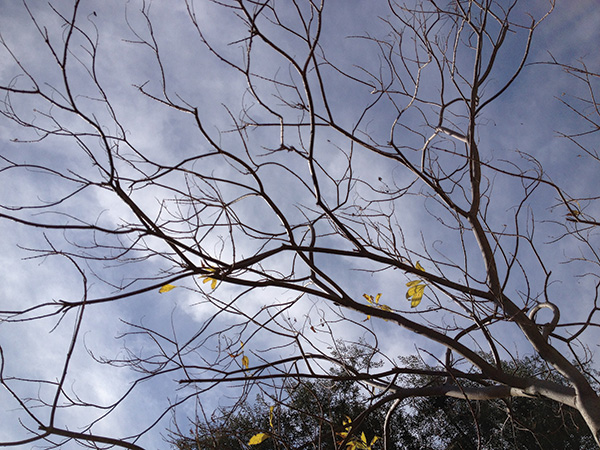
Elena Thomas
Climbing trees has always been a freeing experience for me. As a child, I was exceedingly sensitive, and whenever I felt overwhelmed, I would climb to the top of the pine tree in my front yard. Up in that tree, I always felt more grounded than I ever did standing on terra ÿrma. I learned, as I got older, that while trees provided a unique sense of comfort for me, heights and climbing of any kind provided me with a similar emotional stability.
Notions of stability through climbing have reoccurred in my work as a series of climbable wood sculptures, and trees are a continuing motif in many of my pieces. In my thesis, I address the feeling of comfort and the idea of an emotional escape. By creating wooden sculptures of tree branches, installed in the staircase of the gallery, I intend for viewers to have a feeling of climbing up into a tree as they walk up the stairs. My desire is to share with the audience the sense of beauty, wonder and stability through this experience. I want my piece to inspire people to be more aware, and to have a greater consideration for the sense of well-being one can find in a personal retreat. [clear]
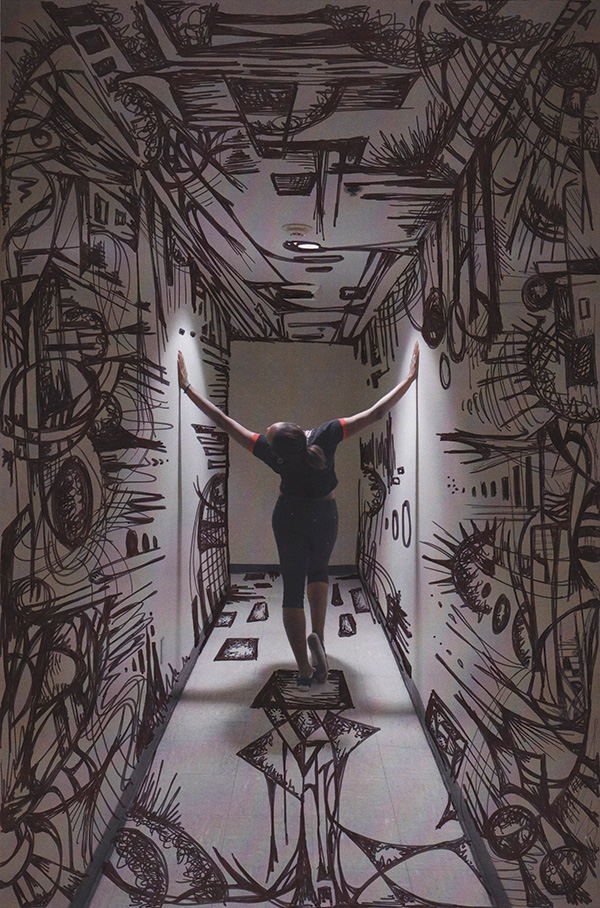
Xiau-Ling (XL) Wee
In this body of work, I capture images of dancers in unexpected places, and then further re-imagine the environment by painting abstract designs on top of the printed photographs. Growing up as a serious athlete, I had a very structured childhood with very little free time, which later propelled me to make the most out of everyday occurrences. I have a history of doing handstands in unconventional settings, which stems from my background as a gymnast. As a dancer, I bring this notion into my thesis project by capturing dance in familiar and unexpected settings, including a public restroom, a grocery store and a parking garage. My continuous quest in searching for creative fun in our everyday lives shows up in my photographs, which portray vitality, movement and imagination. My painting evokes an abstract style, focusing on shapes and lines, with which I intuitively connect. I want to challenge our everyday surroundings, and to find fun in seemingly mundane situations. I hope to call attention to the possibilities available in everyday situations, inspiring creativity in everyday life. [clear]
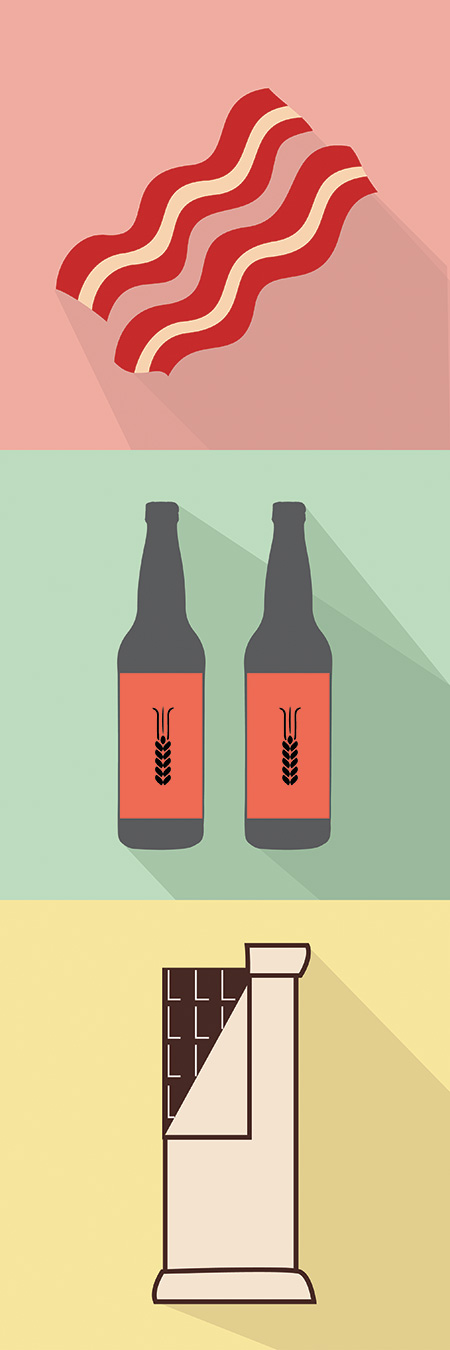
Jaya Williams
My design work imposes a critical take on the social, political and cultural issues surrounding food consumption and branding deception within contemporary marketing. I’ve worked with items that aren’t necessarily deemed healthy but inhabit blatantly deceptive packaging. Through this, I have reproduced familiar visual signs and branding and arranged them into critical pieces of product packaging.
Beyond taking a critical approach, I’ve also made the packaging and branding more readable, digestible, honest and aesthetically pleasing. Through many design iterations and product choices, I narrowed my selection down to three items that all occupy a similar space in our diets: the vices and indulgences. More speciÿcally, I chose beer, bacon and chocolate—the foods we hate to love.
n addition to designing the packaging, I also wanted to start from scratch and create each food by hand—taking time to analyze the processes and conditions in which these foods are made. The beer is a double IPA homebrew, the chocolate was cooked, molded and wrapped in my kitchen, and I shrinkwrapped and repackaged the bacon in the Grove House.
Though I use a variety of materials and processes in each project, I’ve kept a consistent and cohesive theme. Each piece is linked by recurring formal concerns and through the subject matter. The subject matter of each body of work determines the materials and the forms of the work.
 WORLD IS WATCHING – MANIFESTO
WORLD IS WATCHING – MANIFESTO